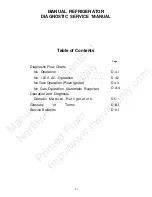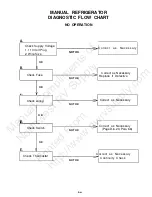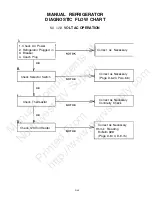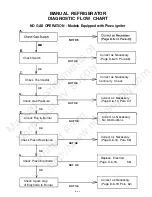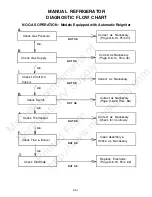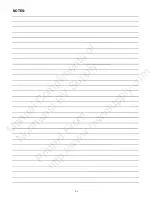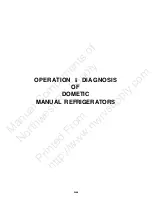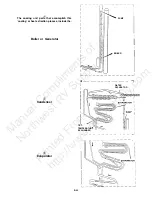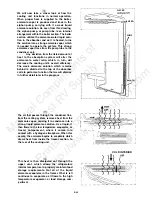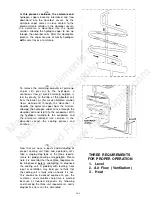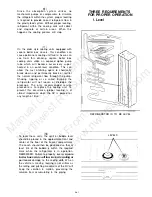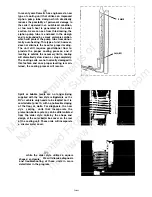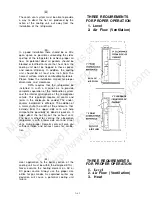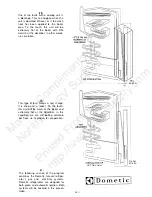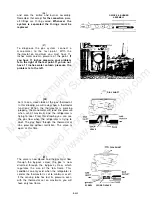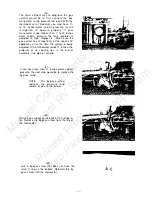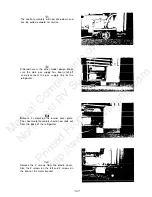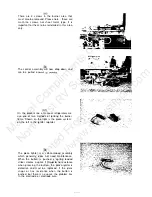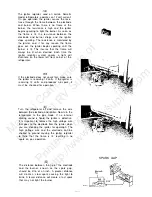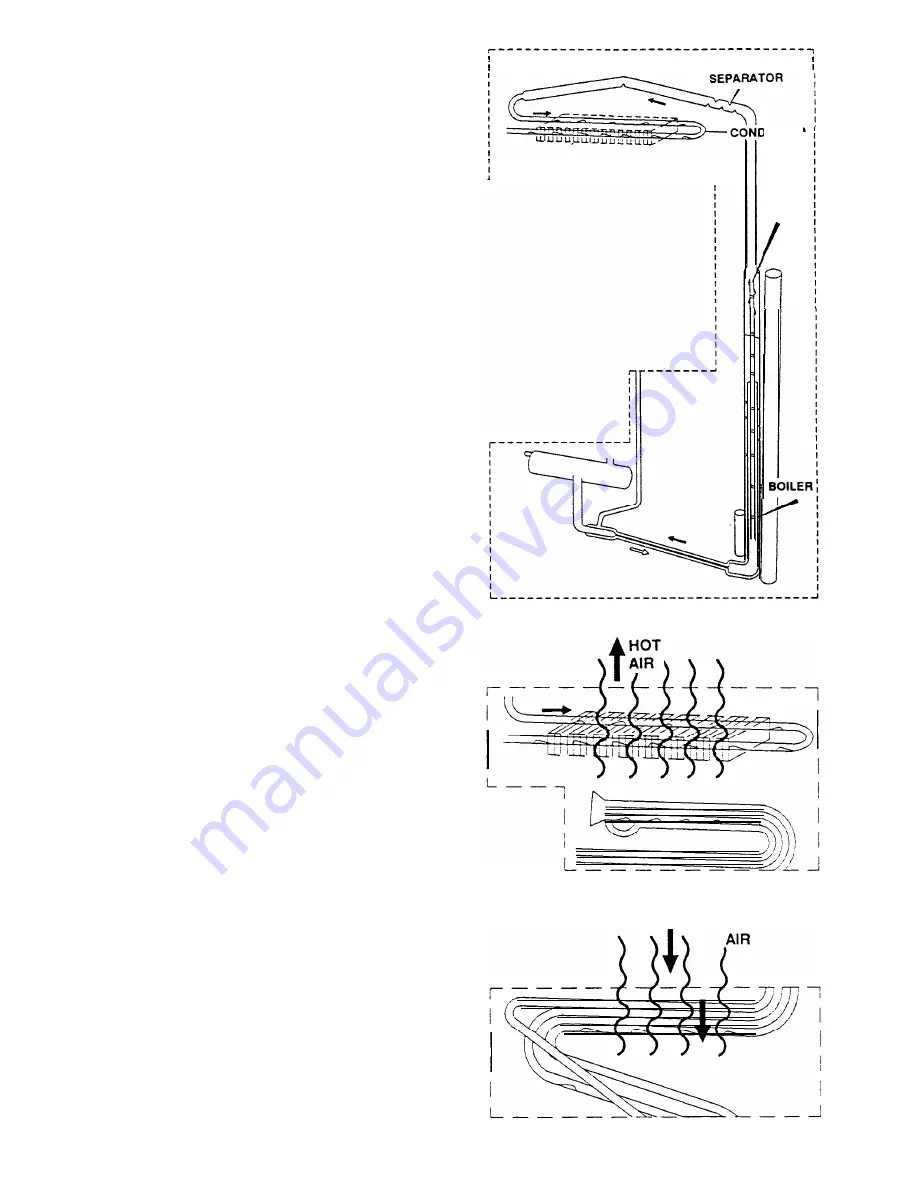
(10)
We will now take a closer look at how the
cooling unit functions in normal operation.
When proper heat is supplied to the boiler,
ammonia vapor is produced and rises in the
siphon pump, carrying with it a weak liquid
ammonia solution. As seen from this drawing,
the siphon pump, or pump tube, is an internal
arrangement within the boiler section. The boiler
section utilizes the ammonia-water liquid solu-
tion in the absorber and as it is heated, turns
the solution into a strong ammonia vapor, which
is needed to operate the system. This strong
ammonia vapor rises from the pump tube to the
condenser coil.
Any deviation from the listed amount of
heat to the absorption system will alter the
ammonia to water ratio, which, in turn, will
decrease the cooling unit’s overall efficiency.
The weak ammonia solution which remains
behind is diverted to the top of the absorber
coils to perform a function that we will discuss
in further detail later in the program.
(11)
The air that passes through the condenser fins,
from the venting system, removes heat from the
ammonia vapor, causing it to condense into a
strong liquid ammonia solution. As a liquid, it
then flows to the low temperature evaporator, or
freezer companment, where it comes into
contact with a hydrogen atmosphere. When this
occurs, the ammonia begins to evaporate which
draws heat from inside the freezer section, to
the rear of the cooling unit.
(12)
This heat is then dissipated out through the
upper vent, which allows the refrigerators
interior temperature to properly maintain food
storage requirements. Not all of the liquid
ammonia evaporates in the freezer. What is left
continues to evaporate as it flows to the high
temperature evaporator, or food storage com-
partment.
WATER
I------------------------~
ENSER
PUMP
COLD INTERIOR
D-6-5
Manual
Compliments
of
Northwest
RV
Supply
Printed
From
http://www.nwrvsupply.com



